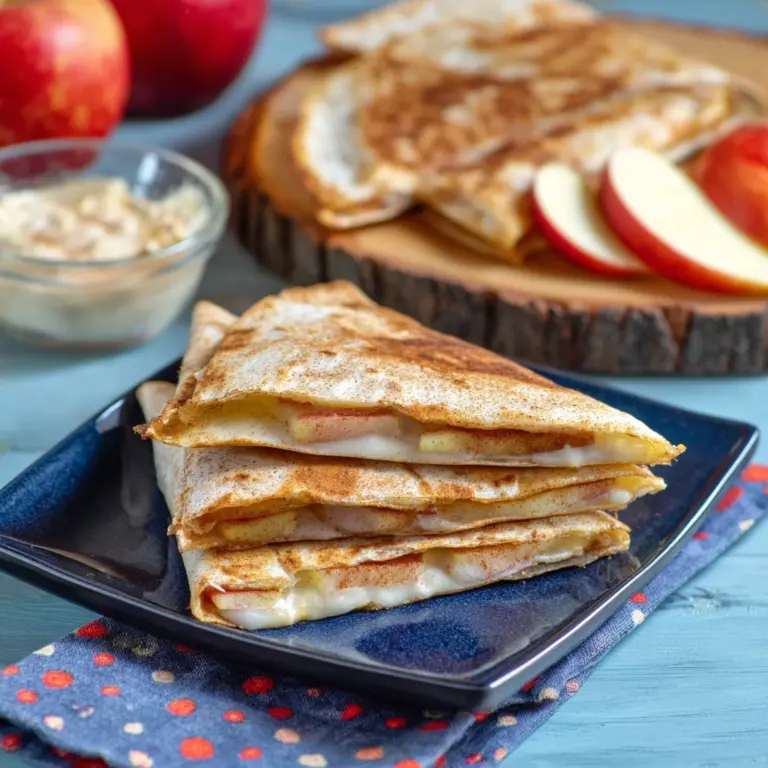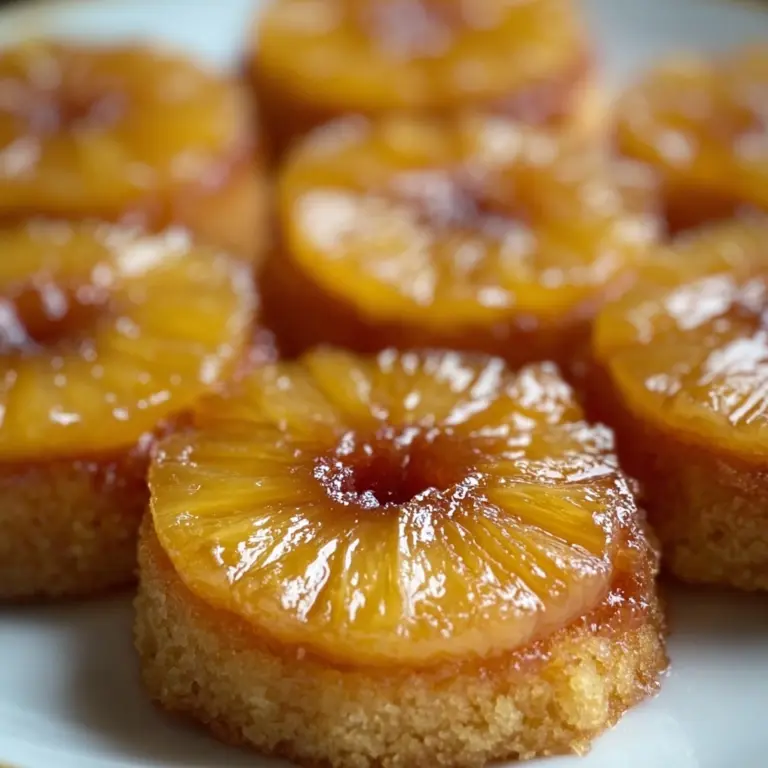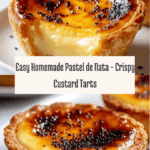Portuguese Pastel de Nata Recipe
Introduction
Pastel de Nata, the iconic Portuguese custard tart, combines a crisp, flaky pastry with a creamy, cinnamon-scented filling. This delightful treat is perfect for an afternoon snack or a sweet finish to any meal. Baking them at home lets you enjoy warm, fresh tarts with their characteristic caramelized tops.
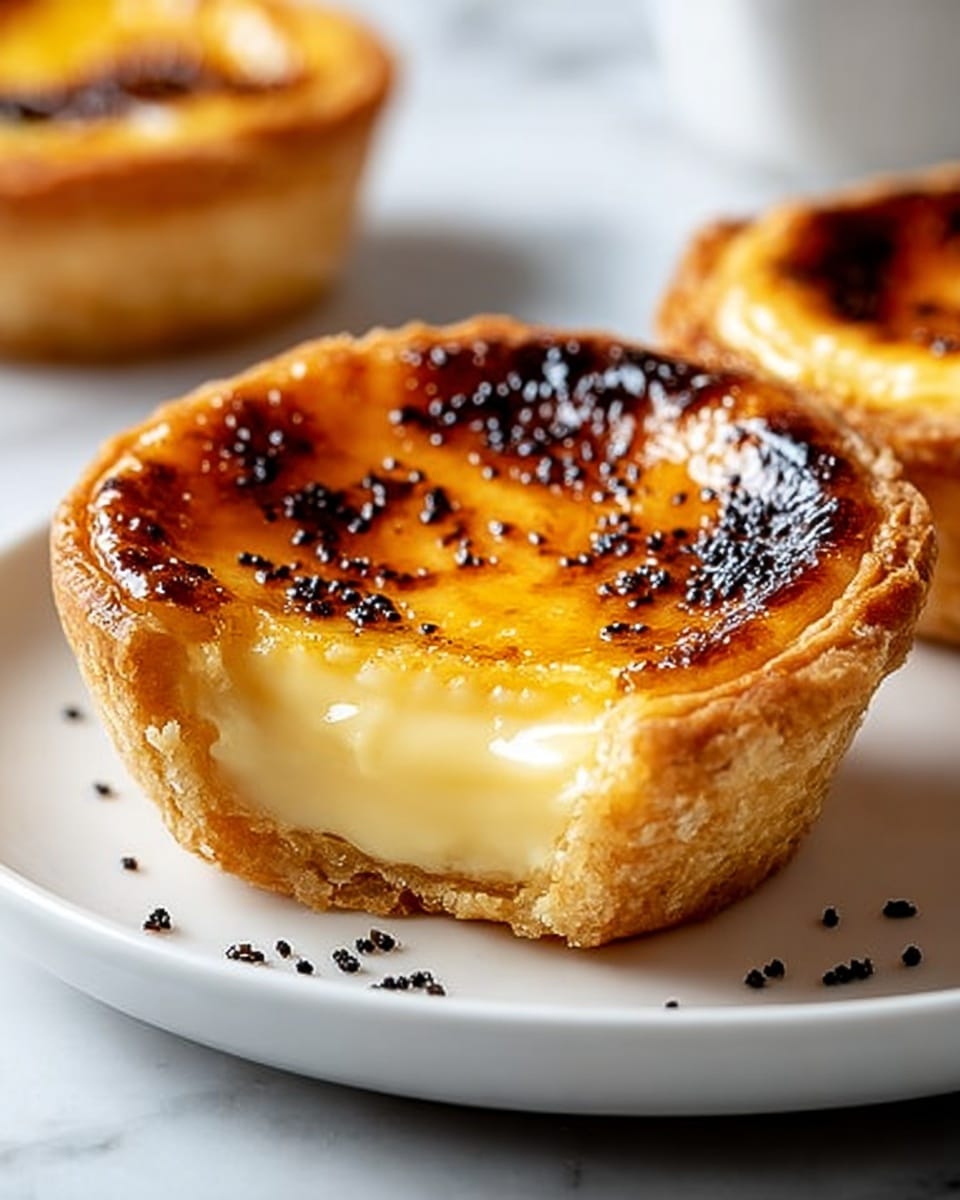
Ingredients
- 1 sheet frozen puff pastry, thawed
- Flour for dusting
- 3/4 cup (150g) granulated sugar
- 1/3 cup (40g) all-purpose flour
- 1 1/4 cups (300ml) whole milk
- 1 cinnamon stick
- Peel from 1 lemon (use a vegetable peeler to avoid the bitter white pith)
- 6 large egg yolks
- Ground cinnamon and powdered sugar for dusting (optional)
Instructions
- Step 1: Roll out the puff pastry on a lightly floured surface into a thin rectangle. Roll it up tightly from one short end to the other, like a jelly roll. Slice into 12 equal pieces.
- Step 2: Place each piece into a muffin tin cup, cut-side down. Using your thumbs, press and stretch the dough evenly into the base and up the sides of the cups.
- Step 3: In a saucepan, whisk together the sugar, flour, and a small amount of the milk to form a smooth paste. Add the rest of the milk along with the cinnamon stick and lemon peel. Cook over medium heat, whisking constantly, until it just starts to simmer and thicken.
- Step 4: Remove from heat and let steep for 10 minutes.
- Step 5: Meanwhile, whisk the egg yolks in a separate bowl. Remove the lemon peel and cinnamon stick from the milk mixture, then slowly whisk the warm milk into the egg yolks.
- Step 6: Strain the custard through a fine mesh sieve for a smooth filling. Let cool slightly.
- Step 7: Preheat the oven to 500°F (260°C) or as high as your oven safely goes.
- Step 8: Pour the custard into the prepared pastry cups, filling each about 3/4 full. Bake for 12–15 minutes, or until the custard puffs and the tops begin to blister and brown. Some black spots are traditional — don’t be afraid of a little char.
- Step 9: Let the tarts cool in the tin for 5 minutes, then transfer to a wire rack to cool further. Dust with ground cinnamon and powdered sugar if desired before serving.
Tips & Variations
- For crispier pastry, chill the shaped dough in the muffin tin for 15 minutes before filling.
- If you prefer a stronger citrus flavor, add a little orange zest along with the lemon peel.
- Use a high-heat oven and place the rack in the upper third for better caramelization on top.
- Try substituting some of the whole milk with cream for an extra rich custard.
Storage
Store leftover Pastéis de Nata in an airtight container at room temperature for up to 1 day or refrigerate for up to 3 days. Reheat briefly in a hot oven (about 350°F/175°C) for 5–7 minutes to revive the crispy pastry and warm the filling. Avoid microwaving as it softens the crust.
How to Serve
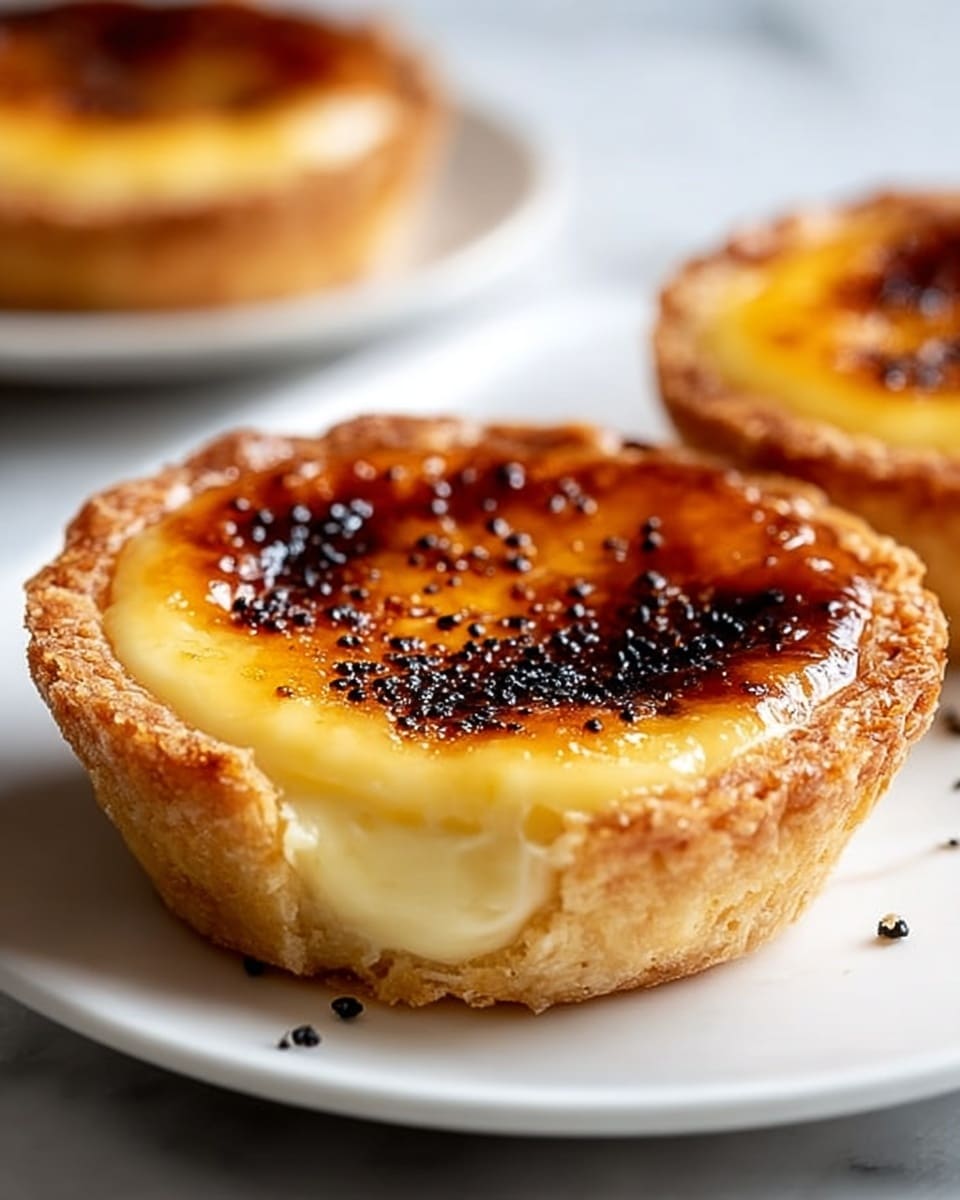
Serve this delicious recipe with your favorite sides.
FAQs
Can I use homemade puff pastry instead of store-bought?
Yes, homemade puff pastry works wonderfully and can add even more flakiness and flavor, though it requires more time and effort to prepare.
Why does the custard sometimes crack or bubble too much?
High heat causes the custard’s surface to blister and darken, which is traditional for Pastéis de Nata. However, bubbles or cracks can form if the filling is overmixed or overbaked. Follow the timing carefully and watch the tarts near the end of baking.
PrintPortuguese Pastel de Nata Recipe
Pastel de Nata, also known as Portuguese custard tarts, are a deliciously creamy and caramelized dessert featuring a flaky puff pastry shell filled with a rich egg custard. This traditional recipe guides you through making the delicate custard and perfectly crisp pastry, finished with optional dustings of cinnamon and powdered sugar for an authentic taste of Portugal.
- Prep Time: 20 minutes
- Cook Time: 15 minutes
- Total Time: 35 minutes
- Yield: 12 tarts 1x
- Category: Dessert
- Method: Baking
- Cuisine: Portuguese
Ingredients
For the pastry:
- 1 sheet frozen puff pastry, thawed
- Flour for dusting
For the custard filling:
- 3/4 cup (150g) granulated sugar
- 1/3 cup (40g) all-purpose flour
- 1 1/4 cups (300ml) whole milk
- 1 cinnamon stick
- Peel from 1 lemon (use a vegetable peeler to avoid the bitter white pith)
- 6 large egg yolks
For serving (optional):
- Ground cinnamon for dusting
- Powdered sugar for dusting
Instructions
- Prepare the pastry cups: Roll out the thawed puff pastry on a lightly floured surface into a thin rectangle. Roll it tightly from one short end to the other, similar to a jelly roll. Slice the rolled pastry into 12 equal pieces. Place each piece, cut-side down, into a muffin tin cup and use your thumbs to press and stretch the dough evenly across the base and sides of each cup.
- Make the custard base: In a saucepan, whisk together the sugar, flour, and a small amount of milk until forming a smooth paste. Add the remaining milk, cinnamon stick, and lemon peel. Cook over medium heat, whisking constantly until the mixture begins to simmer and thickens slightly.
- Steep the custard: Remove the saucepan from heat and allow the milk mixture to steep with the cinnamon stick and lemon peel for 10 minutes to infuse flavor.
- Combine eggs and milk mixture: In a separate bowl, whisk the egg yolks. Remove the lemon peel and cinnamon stick from the milk mixture. Slowly whisk the warm milk mixture into the egg yolks, tempering the eggs.
- Strain the custard: Pour the custard mixture through a fine mesh sieve to remove any lumps and ensure a smooth filling. Allow the custard to cool slightly.
- Preheat the oven: Heat your oven to 500°F (260°C) or the highest temperature it safely reaches for best caramelization.
- Fill and bake the tarts: Pour the custard into the prepared pastry cups, filling each about three-quarters full. Bake in the preheated oven for 12–15 minutes, or until the custard puffs up and the tops begin to blister and brown, including some traditional black spots.
- Cool and serve: Let the tarts cool in the muffin tin for 5 minutes before transferring them to a wire rack to cool further. Optionally, dust with ground cinnamon and powdered sugar before serving.
Notes
- Use a vegetable peeler to remove lemon peel to avoid the bitter white pith.
- High oven temperature is key to achieving the characteristic blistered, caramelized top.
- Do not overfill the pastry cups to prevent spills during baking.
- Black spots on top of the custard are traditional and add to the authentic flavor.
- Serve warm or at room temperature for best flavor and texture.
Keywords: Pastel de Nata, Portuguese custard tart, puff pastry, custard tart recipe, traditional Portuguese dessert, egg custard tart


